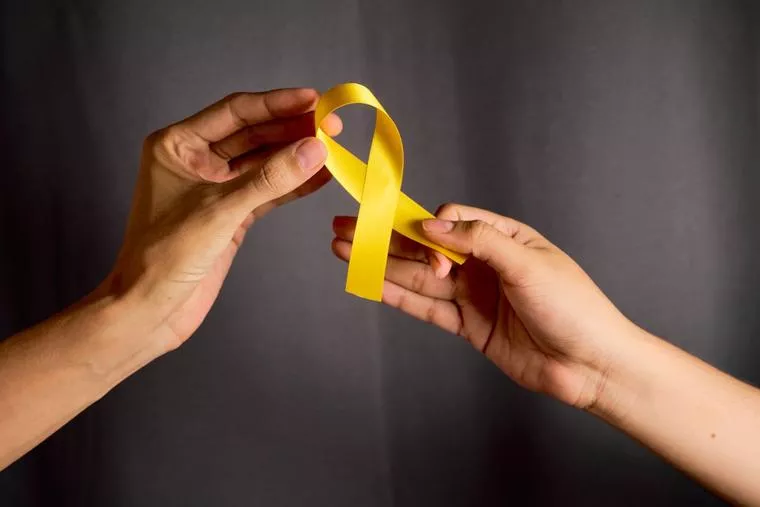September is the month where we focus attention on topics related to suicide. On September 10, the world observes Suicide Prevention Day—a moment to raise awareness, foster connection, and offer hope.
However, in a world that rushes to “raise awareness”, we often forget awareness without action is just noise. And in the meantime, while we hesitate to become involved in another person’s lived experiences, suicide rates climb, mental health systems are overwhelmed, and governments respond with interventions that are minimal, at best.
According to the International Association for Suicide Prevention (IASP), this year’s theme for 2025, “Healing is possible”, offers a message of optimism—it reminds us of the urgent need to listen, to care, to act, and to look deeper into the homes and hearts where healing truly begins.
For many persons living with suicidal ideation (thinking of suicide often), this message of healing can feel like a distant echo because healing isn’t always visible. And for some, it isn’t even imaginable. To those who wake up each day battling thoughts that threaten to consume them, “healing” can also feel like a cruel ideal which ignores the messy, painful reality of recovery.
When the darkness is thick and unrelenting, when the weight of existence feels unbearable, the idea of healing may not provide comfort. As parents and caregivers, we must be careful not to let hope become a demand as everyone is not ready to heal. Not everyone believes they can. And yet, they are surviving. One more hour. One more day.
Suicide does not discriminate. It reaches across age, race, gender and class. It seeks out the vulnerable—those who feel unseen, unheard or unworthy. It pursues the young, overwhelmed by futures they cannot envision. It batters the elderly, burdened by loss, ill health and isolation. The current statistics are sobering: men and boys die by suicide nearly four times more often than women—often because they are less likely to seek help, and/or less likely to believe healing is possible.
We live in societies where persons, especially men and boys, are hesitant to speak out about their troubles, and mental health is still treated as a private matter, a personal failing, or a spiritual weakness. We are told to “be strong, stay positive, reach out”—but rarely are we taught how to sit with our sorrow, how to name it, how to survive it. And when we do speak, we are often met with strained looks and discomfort from our friends and loved ones.
1. Healing begins at home, but too often, families miss the silent cries for help.
Subtle changes—withdrawal from loved ones, sudden mood swings, loss of interest in once-loved activities, or even excessive cheerfulness masking deep pain—can be red flags that something is wrong. In the rush of daily life, these signs are easy to overlook and, tragically, many are wounded not just by life’s hardships, but by the careless comments of those closest to them—words that are internalised and replayed again and again in their minds, until they become unbearable.
As the featured speaker at the 2024 IASP Conference in Minneapolis, I spoke about the urgent need to return to the heart of what truly matters: nurturing, connection, and the values that hold families together. Statistical data may inform policy, but they cannot replace the healing power of presence, empathy and love.
The National Institute of Mental Health (NIMH) also acknowledged that while data and screening tools are valuable, these must be paired with follow-up interventions and compassionate care to be effective. For someone who feels shattered, the presence of a compassionate, attentive family can be life-saving. It’s not about having all the answers—but creating a safe space where listening replaces judgment, and love replaces silence.
Families must learn to lean in, speak with care, and stay close, even when the words are hard to find. Healing is possible, but it often begins with someone simply saying, “I am here, and I care.”
2. Healing is possible—but only when we make it possible.
Conversations about suicide prevention cannot remain as a private struggle or a whispered hope—they must be woven into our institutions, our policies, and our everyday interactions. Mental health care should be as accessible and as normalised as physical health care. Schools must teach emotional resilience alongside academics. Workplaces must recognise psychological well-being as essential to productivity and human dignity.
Religious communities must offer sanctuary without judgment, move beyond platitudes and create spaces where pain is not punished, but respected. And governments must treat mental health not as a side issue, but as a cornerstone of public health, investing in accessible, affordable and culturally sensitive mental health care.
Healing becomes possible when society itself is structured to support it—when compassion is not just personal, but systemic. If you are that person—if healing feels impossible right now—know this: you are not broken. You are not weak. You are surviving, and that is enough. One more hour. One more day. You are healing, too, at your own pace.
Let Suicide Prevention Day be more than a symbolic observance. Let this day and the days that follow be a moment of collective responsibility—a time when, as a society and as a family, we choose to listen more deeply, respond more bravely, and build communities where grief is not hidden, where wounds are not ignored, and where healing is not just possible—but inevitable.
And for those of you still in the dark, may this article offer not just hope, but the assurance that you are seen, valued, and never truly alone. Take care.
—Author Margaret Nakhid-Chatoor is a psychologist and educator.
Credit – Express Newspaper, (trinidadexpress.com)
See the original article here.





